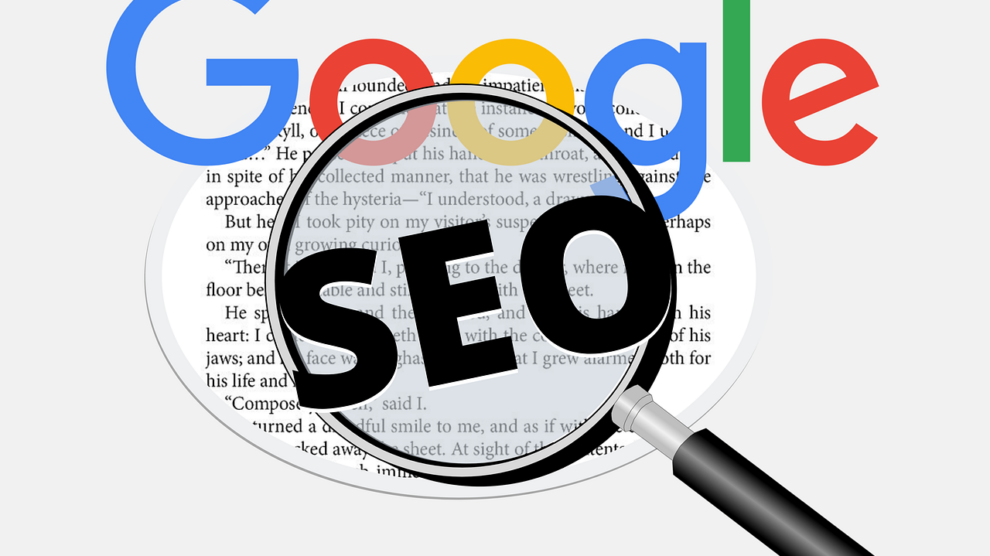In today’s age of the digital market, there is no shortage of competition. There is about a 5% increase in Internet users every year. And the majority of searchers (about 75%) never reach the 2nd page. In short, it’s necessary for you to be on page 1 if you want to succeed. This is where SEO comes to help.
Search Engine Optimization (SEO) is a process of methods and strategies used to increase your website’s visibility on the search engine result pages (SERPs). As a result, it brings your website organic traffic, which is the main difference between paid advertising.
SEO as we know is an ever-changing landscape, so it’s important to stay in the trend if you don’t want to fall behind your competitors.
So we made a quick guide to help you improve your site’s rankings in 2022.
Here is what we’ll focus on today:
- Content Quality
- Updating Your Content
- Website Loading Speed
- Metadata
- Cross Linking to Relevant Sites
- Brand New Keywords
So let’s get started!
1. Content Quality
The quality of the content present on your page is probably the number one driver of your search engine rankings – so it’s not exaggerating to say with great content comes great respo …results.
Quality content created specifically for your intended user increases site traffic, which improves your site’s authority and relevance. Always try to fine-tune your web writing skills and present yourself as an authority on the topic you are writing about.
There are content optimization tools. With their help, you create high-quality, semantically-rich content that ranks higher in Google.
Using similar NLP algorithms as Google, these tools identify keywords, subtopics, synonyms, and even common questions search engine crawlers are looking for on the page when promoting content.
Keywords
Put yourself in the reader’s perspective, how would they come to your content? What combination of keywords would you have to use to reach your audience?
Another thing you could use is multiple Keyword phrases
Identify and target a specific keyword phrase for each authoritative content page on your website. Consider where it would be the perfect place to put your keyword for it to make perfect sense.
Things to look out for when considering placement;
Should you use it in the page URL?
Can the keyword phrase be in the page title?
What about placing it in page headings and subheadings?
All of these can seem a bit complicated, but a general rule of thumb you should stick to is to be natural and user-friendly. As we mentioned, content plays a very big part in search engine rankings. You can reuse your keyword phrase several times throughout the page (no more than 4 uses). Be authoritative. Strategically link to relevant sources and additional information—both within your organization’s broad website and even to other websites which are useful.
Don’t forget to use bold, italics, heading tags (especially an H1), and other emphasis tags to highlight these keyword phrases—but like with keywords, don’t overuse them. You still want your language and writing style to read naturally.
Summary– Good quality content is the best SEO strategy. The results will come naturally if your content is written for the user and not for the search engine.
2. Update Your Content
Let us emphasize this next sentence. Search engines feel strongly about content.
Regularly updated content is viewed as one of the best indicators of a site’s relevancy, so be sure to keep it fresh. Audit your content on a set schedule (semesterly for example) and make updates as needed.
Write additional content regularly, with targeted keyword phrases. This is where blogging comes in handy, as they are a great way to boost your rankings. Blog posts can even be shorter updates about the specific topics you are targeting. Interlink your related CMS web pages and blog posts when it helps give the reader a better picture or additional information about the topic.
3. Improve Your Website Loading Speed
Google has stated that depending on your website’s loading speed, it can have a direct impact on page ranking.
Check out this study by Neil Patel. The result of the study shows that pages that are at the top of the rank of Google’s first page usually load significantly faster than other pages that are positioned on the bottom part of page 1.
So you’d want to have a more quick response from the site rather than a slower one.
So what can you do to help you with your website’s loading speed?
There are tools that can help you ascertain your web’s speed and give you a quick benchmark of your site such as:
Google’s PageSpeed Insights
WebPageTest.org
Pingdom
They give you a measurement score (along with explanations for that score) which operates on how the page is doing loading wise, as well as a quick breakdown of which part of the page should be adjusted
In short, all these places will show you in which directions you should gravitate towards in order to fix your issues and optimize your website’s speed.
Here are some quick tips that we usually found to be helpful:
Use compressed images
Move to a better host
Try to cut down your website’s page file size
Remove all the unnecessary 3rd party scripts
4. Metadata
There are invisible meta tags on your pages which provide information. They are called “metadata” and while they are not displayed on the page itself, they can be read by search engines and web crawlers, and thus are a vital part of SEO.
Google uses this metadata collected from the meta tags in order to understand web page better. They can use this information for ranking purposes, to display snippets in search results, and sometimes they can ignore meta tags.
The Meta tags are placed in the <head> section of a HTML document, and so they need to be coded in your Content Management System (CMS). This can be easier or harder depending on the platform that powers your website: an “out of the box” solution like WordPress will have a dedicated section for meta tags like canonical links or meta descriptions.
In short, they make it easier for search engines to determine what your content is about.
As your site is going through occasional changes it is important for you to also review and update your metadata.
Here is our recommendation on which metadata you should focus:
Title Metadata
Title metadata is responsible for the page titles displayed at the top of a browser window and as the headline within search engine results. It is the most important metadata on your page.
This adds to the importance of using well-thought-out page titles rich with keyword phrases.
Description Metadata
Description metadata is the textual description a browser will use in your page search return. Think of it as your site’s window display—a concise and appealing description of what is contained within, with the goal of encouraging people to enter. A good meta description will typically contain two full sentences. Search engines may not always use your meta description, but it is important to give them the option.
Keyword Metadata
Keyword metadata is rarely if ever used to tabulate search engine rankings. However, you should already know your keyword phrases, so it doesn’t hurt to add them into your keyword metadata. You’ll want to include a variety of phrases. As a general rule, try to keep it to about 3-7 phrases with each phrase consisting of 1-4 words. A great example would be “computer science degree.”
5. Link Towards Other Relevant Sites
If you have a page whose content consists of objective, authoritative and rich information, or in short its content quality is high. it will most likely help readers learn about what they are interested in. Those high-quality web pages tend to attract links from other websites, which helps you place higher in the rankings.
Linking to other relevant sites increases your authority and credibility. One often mistake that people make when linking websites is having bland “click here” links. On its own, “click here” has minimal to no search engine value beyond the attached URL. Instead, try inserting the name of the destination, such as “trusted link building agency”. Not only can you improve your page’s ranking but you will also assist the page it’s linking to if the keyword is rich enough.
In short: Aim to use descriptive links by linking keywords as it gives additional value to the engine and your visitors which in turn helps your rank better.
6. Target Brand New Keywords
One of the ways to get your page to the desired rank is to use popular, yet low-competition keywords. But that’s easier said than done.
So how can you achieve this?
As you know, the majority of popular keywords are competitive simply because a big number of other websites are using them as they are trying to rank as well.
You can try to come up with new words that encapsulate the same meaning. With new terms, you’ll automatically compete with fewer people and usually skyrocket towards the top of results.
In short- aim for totally new keywords.
We hope this guide helped you to achieve optimized content for both your visitors and the crawl bots. By utilizing these quick tips and tricks you’ll have a clean, engaging experience, and should stand out amongst your competitors in no time.





